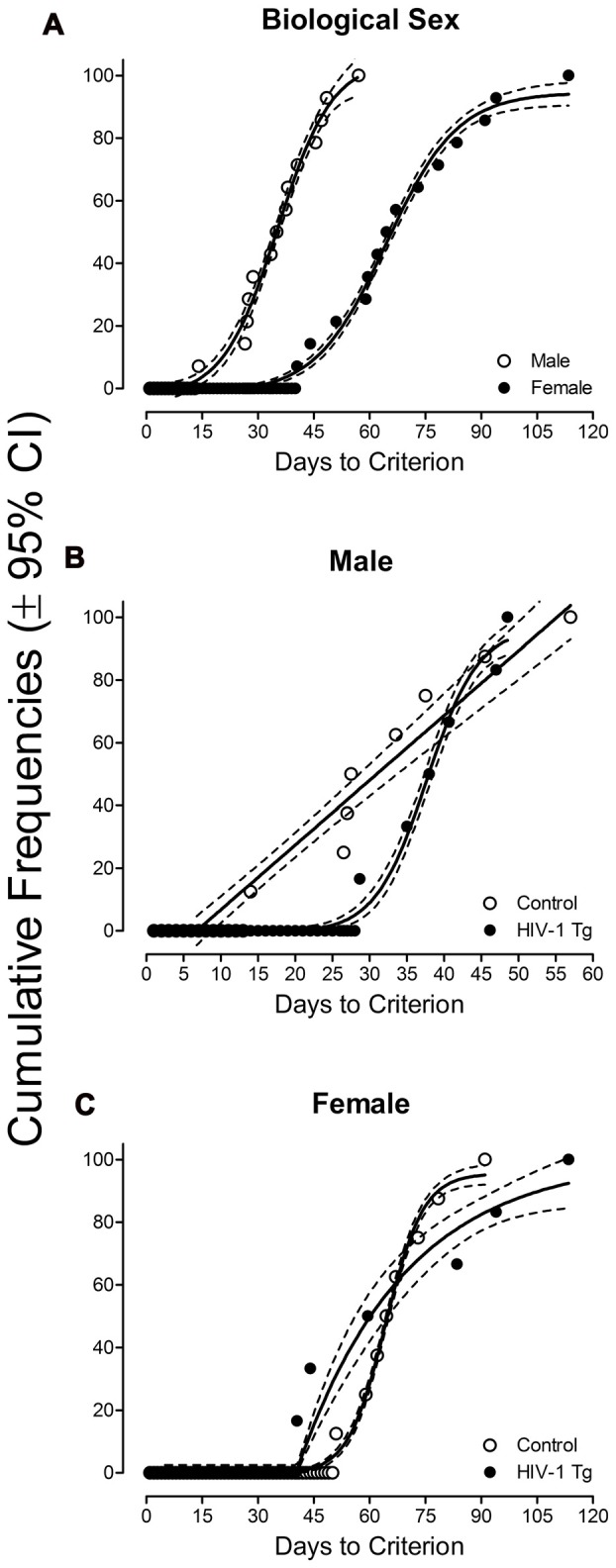Figure 2.

(A) The number of sessions required to meet criterion (70% accuracy for five consecutive or seven non-consecutive days) in the signal detection task is presented as a function of biological sex, representing both HIV-1 Tg and control animals by collapsing across genotype (±95% CI). A sigmoidal dose response was the best fit for both male (R2: 0.99) and female (R2: 0.99) animals, however, significant difference were observed in the fit of the function (F(4,70) = 770.0, p ≤ 0.001). All male animals completed signal detection within 57 days. In stark contrast, female animals displayed a 27-day lag, relative to male animals, before beginning to acquire the task, with all animals meeting criterion within 113 days. (B) A first-order polynomial provided a well-described fit for male control animals (R2: 0.93), while a sigmoidal dose response curve was the best fit for male HIV-1 Tg (R2: 0.98). Male HIV-1 Tg animals exhibited a 14-day lag, relative to control animals, before beginning to acquire the signal detection task. (C) A sigmoidal dose response curve was the best fit for female control (R2: 0.99) animals. In sharp contrast, the number of test sessions required for female HIV-1 Tg animals to criterion were best fit with a plateau followed by a one-phase association (R2: 0.95). Overall, female control animals acquired the task at a significantly faster rate relative to female HIV-1 Tg animals.
